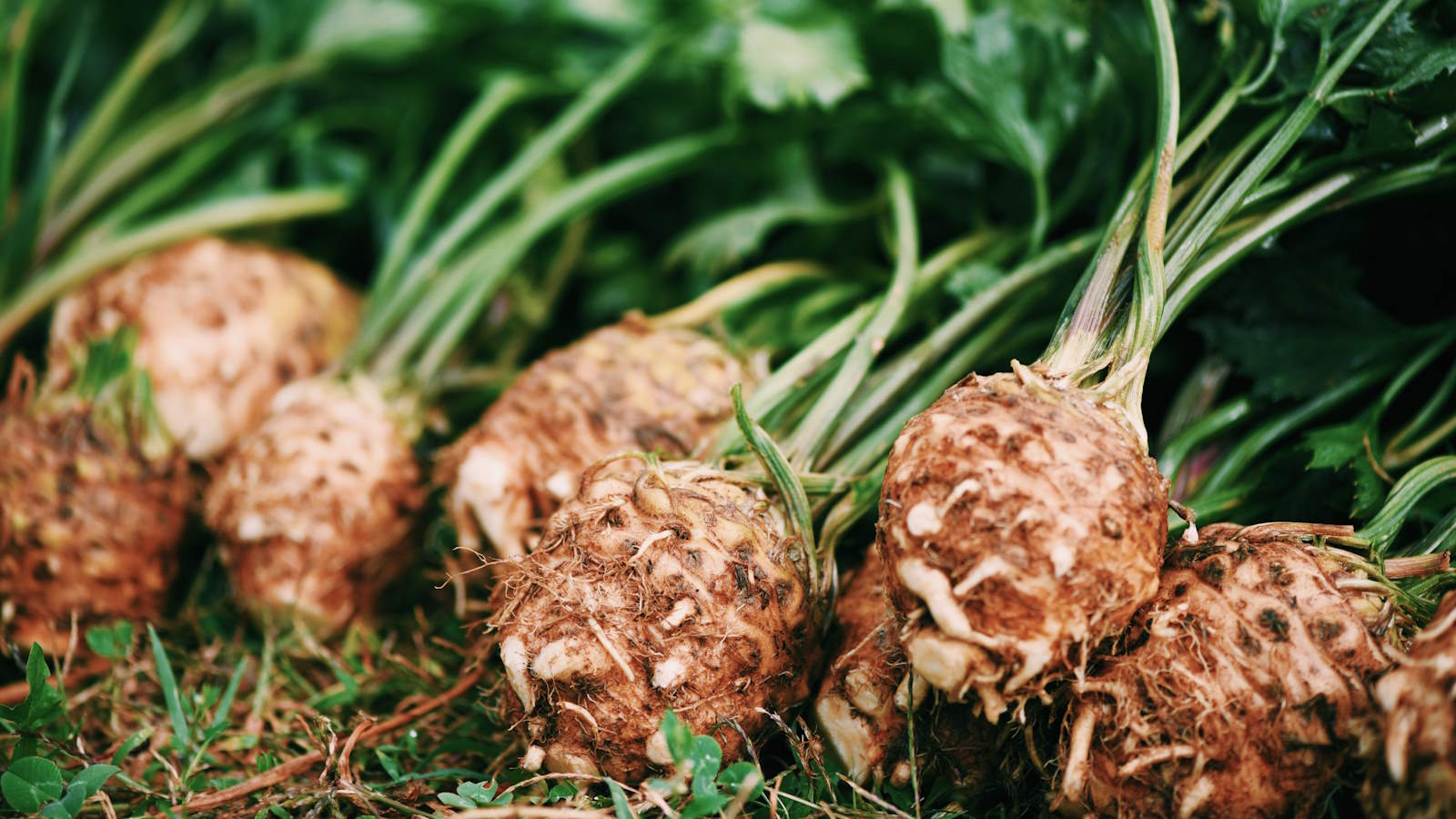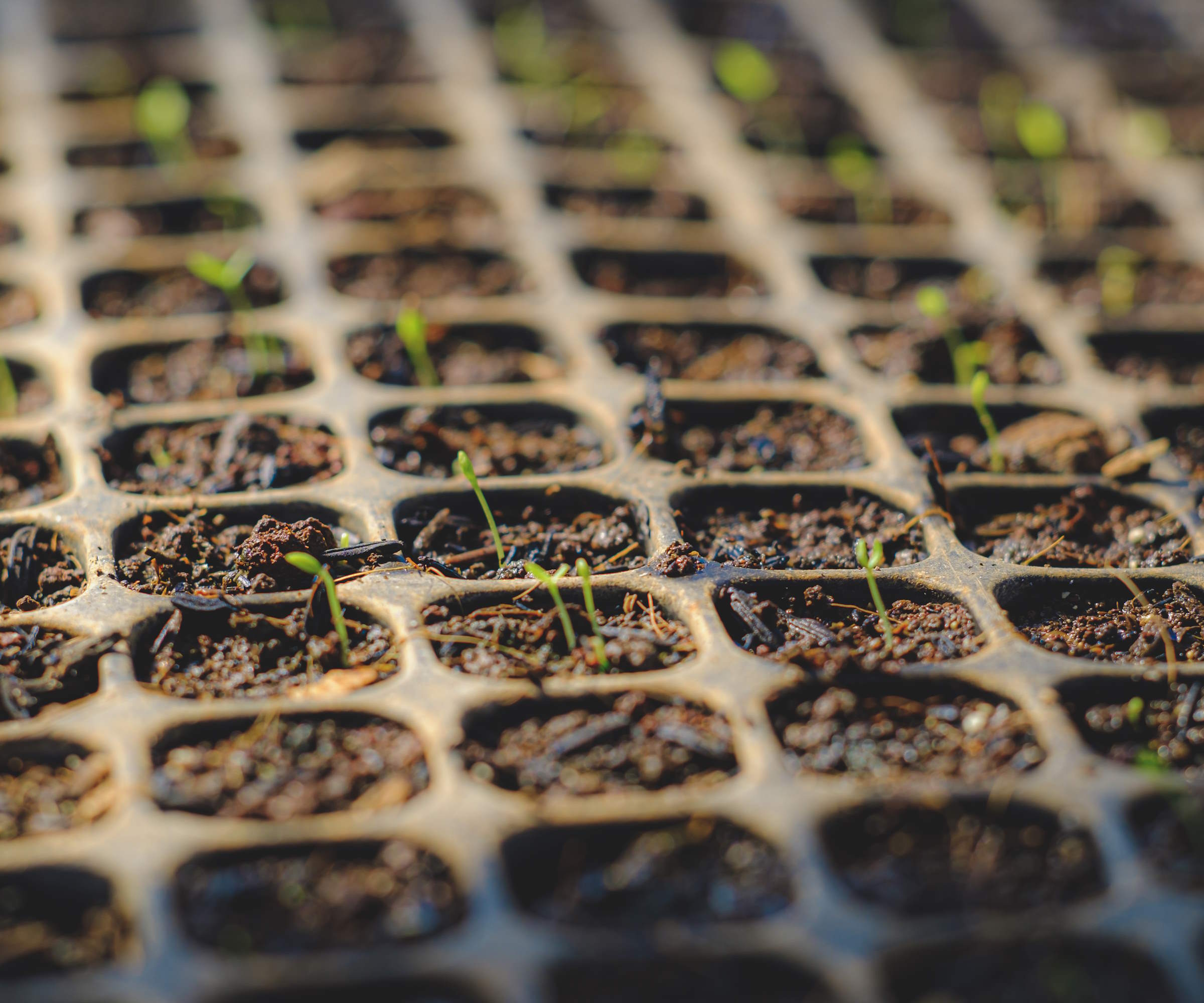How to grow celeriac – what I learnt from growing the root crop for restaurants
Celeriac was a mainstay in vegetable gardens I worked in, and is such a fabulous crop to grow


Celeriac, which is also known as celery root, is a fantastic vegetable to grow. The plants produce unique knobbly swollen roots that have an earthy taste, similar to that of celery.
I always really enjoyed growing celeriac in the vegetable gardens that I worked in. I have cultivated and harvested a lot of celeriac in different gardens, and also on my home allotment. It was annually requested by chefs to be grown and highly-prized by them come harvest time.
Celeriac may not be one of the easiest vegetables to grow, and it does have a long growing season. However, the time and effort it takes to grow the crop is more than repaid by its delicious globe-shaped roots that can be harvested for a long period throughout fall and winter.

Growing celeriac can take around 120 days to go from planting to harvesting
How do you grow celeriac?
You can grow celeriac from seed, or young plants can be purchased from nurseries, garden centers, or online to plant out into the kitchen garden.
I have grown a lot of celeriac over the years and have predominantly grown the plant from seed - with a high degree of success. I personally found it to be a reliable way to grow the crop and produce harvests of good-sized roots.
How to grow celeriac from seed

Patience and care are key to growing celeriac from seed
Celeriac is a crop with a long growing season and it can admittedly be slow and unpredictable to grow from seed - it requires a bit of time and patience. The seeds themselves are tiny, so you do need to pay attention and handle them carefully to avoid sowing a huge clump of seeds in one go.
The time to sow celeriac seed comes in late winter or early spring. Sowing as early as you can is beneficial to give the vegetable the longest season possible to grow and swell into a sizable root. The earliest you can plant the vegetable is in February - but only if you can provide celeriac the heat it requires to germinate. Otherwise start the seeds from March onwards.
Design expertise in your inbox – from inspiring decorating ideas and beautiful celebrity homes to practical gardening advice and shopping round-ups.
Sow celeriac seeds into trays or modules filled with a good quality seed compost and cover them only lightly with compost or vermiculite. Light is important to getting celeriac seeds to germinate and, due to their small size, they do not want to be covered with lots of compost.
Germinate the seeds in a greenhouse, or on a windowsill, at temperatures of 60-70°F. It may be beneficial to use a heated propagator or heat mat - such as the Propagate Pro Seedling Heating Mat available at Walmart - to provide consistent warmth to help with germination. The seeds may take time to germinate and will want pricking out when they get their first true leaves, to allow them to grow on before being planted out once the ground warms up.
Pot the seedlings up into large modules or small pots and keep them in a warm spot to grow. The time to transplant seedlings will come once the risk of frosts have passed in late spring, after a period of hardening off.
You can see the range of celeriac seeds at True Leaf Market
Where to plant celeriac

Celeriac wants to grow in a moisture-retentive yet free-draining soil
Celeriac wants to grow in a sunny spot, but it can work as a vegetable to grow in light shade as long as it is given plenty of water throughout the season. The soil wants to be rich and free-draining, ideally with stones removed and the ground loosened.
Incorporating some organic matter, such as compost or well-rotted manure, can help to improve moisture retention and provide the crop with nutrients throughout the season. Celeriac will grow in most soil types, but water and nutrients are key to producing large roots to harvest.
Plants should be transplanted at least 12 inches apart in the garden, in rows that are around 18 inches apart. This should give room for good-sized roots to develop and also leave space to run a garden hoe between plants to aid with weeding.
Regularly removing weeds reduces competition for the vital water and nutrients, and hoeing young weeds little-and-often can be the most effective way to combat weeds around celeriac. A push-pull garden hoe, such as this one at Amazon, is an efficient tool to eradicate young weeds.
Caring for celeriac

Celeriac plants want water as they grow to swell in size
Water young plants regularly and continue to keep the soil evenly moist throughout the growing season. Check the soil regularly to gauge when to water plants - using a soil moisture meter may be beneficial, like this soil moisture meter at Walmart. Take care to water the soil and not the foliage, so the root can take up as much of the moisture as possible, and make sure to keep soil moist in the summer. Paying close attention to watering will reward you with big crops as the roots swell thanks to lots of available moisture.
As well as water, feeding celeriac can go some way to helping result in large vegetables. From early summer onwards the plants will benefit from feeding with a general and balanced fertilizer every three weeks. Such a feed to use would be Jobe’s Organics All Purpose Granular Fertilizer, available at Amazon. Refrain from using a high nitrogen feed, as this will encourage the growth of foliage rather than the development of the roots.
As the roots develop, it is recommended to remove the lowest foliage. Those leaves tend to be aged and facing downwards, so removing them exposes the developing root and helps it to swell in size. Yellowing or blotchy leaves may be a sign of celery leaf miner - remove any leaves affected when you spot issues.
Celeriac takes 100-130 days to mature and the harvesting season tends to start from September onwards. However, leaving the roots in the ground for longer is advisable as the flavor improves after a few touches of frost. Harvest celeriac as required throughout winter, carefully levering the roots out of the ground with a fork.
FAQs
Can celeriac be grown in containers?
Celeriac can be grown as part of a vegetable container garden, however, the downside is that large pots or planters are going to be required. The large root that develops means that a single plant may require a minimum of an eight-inch diameter container.
Growing celeriac in containers will also put more pressure on watering. As the roots need lots of water to develop, they need constant moisture and a lack of water can cause it to stop growing. You will need to keep a very close eye on the pots to water plants in containers - and celeriac in pots will also need fertilizing every one or two weeks.
Do slugs eat celeriac?
Slugs can potentially be an issue with celeriac when plants are young. The pests can nibble celeriac seedlings and stop them developing, but the older and larger the vegetable gets the less slugs are likely to be a problem. It may be worth considering using slug control methods around celeriac seedlings to help get rid of slugs. Some good examples include protecting plants in a cold frame, putting a barrier of something sharp around plants, or using beer traps to attract slugs away from your celeriac.
If you live in a cold climate and want to overwinter celeriac, there are some simple alternative ways to protect vegetables from frost other than adding a layer of straw. These can include covering plants with horticultural fleece, cloches, or even old blankets or sheets.

Drew has worked as a writer since 2008 and was also a professional gardener for many years. As a trained horticulturist, he worked in prestigious historic gardens, including Hanbury Hall and the world-famous Hidcote Manor Garden. He also spent time as a specialist kitchen gardener at Soho Farmhouse and Netherby Hall, where he grew vegetables, fruit, herbs, and cut flowers for restaurants. Drew has written for numerous print and online publications and is an allotment holder and garden blogger. He is shortlisted for the Digital Gardening Writer of the Year at the 2025 Garden Media Guild Awards.